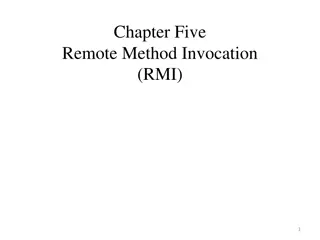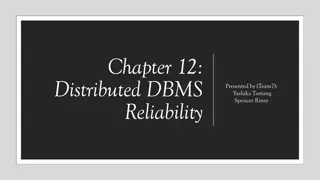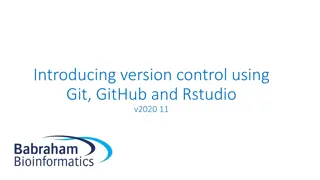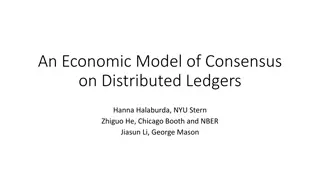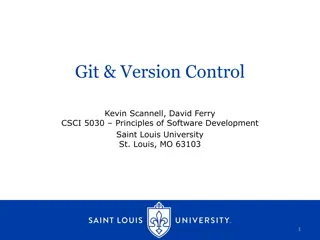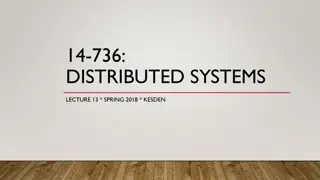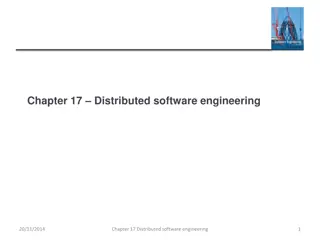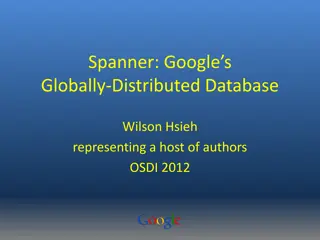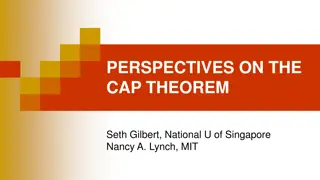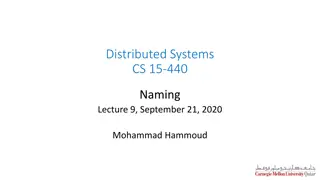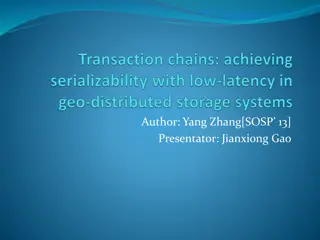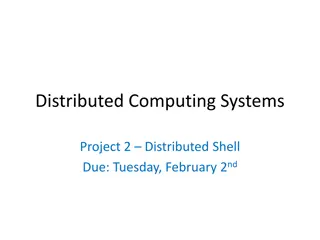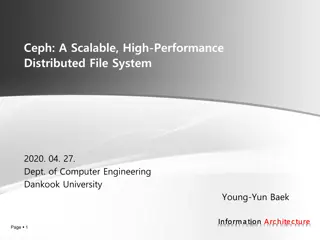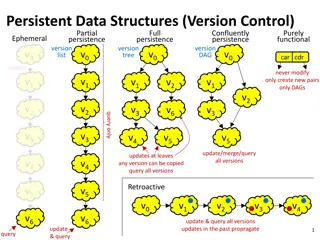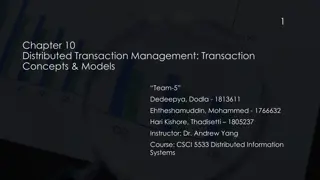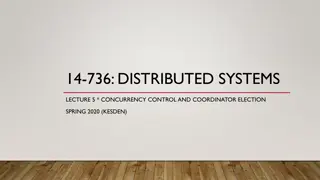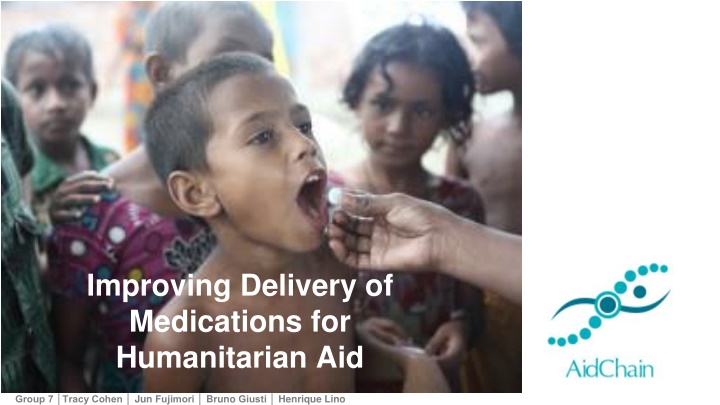
Enhancing Humanitarian Medication Delivery for Aid Groups
Explore the challenges faced in humanitarian medication delivery, the impact on at-risk populations, and the proposed blockchain-based solution AidChain to improve efficiency and coordination. Support the initiative by funding the development of a prototype and proof of concept pilot.
Download Presentation

Please find below an Image/Link to download the presentation.
The content on the website is provided AS IS for your information and personal use only. It may not be sold, licensed, or shared on other websites without obtaining consent from the author. If you encounter any issues during the download, it is possible that the publisher has removed the file from their server.
You are allowed to download the files provided on this website for personal or commercial use, subject to the condition that they are used lawfully. All files are the property of their respective owners.
The content on the website is provided AS IS for your information and personal use only. It may not be sold, licensed, or shared on other websites without obtaining consent from the author.
E N D
Presentation Transcript
Improving Delivery of Medications for Humanitarian Aid Group 7 Tracy Cohen Jun Fujimori Bruno Giusti Henrique Lino
Executive Summary Humanitarian aid, which provides assistance in moment of crisis, ensures at- risk populations around the world receive critical health care. However, the supply chain of donated medications is highly inefficient. We propose AidChain a blockchain-based technology with smart contracts - to track the distribution of donated medications and improve coordination among the complex web of parties seeking to deliver care. By bridging this gap we can improve medication humanitarian aid efficiency. For that we ask for US$1M to fund development of a prototype and proof of concept pilot. 2
Need for Humanitarian Aid and medications to treat illness increasing around the world Humanitarian Aid By the Numbers Desperate shortages [of medical supplies and providers] in Syria has affected not only victims of war, but also millions of patients suffering from chronic diseases4. of people in extreme poverty live in countries are environmentally vulnerable or politically fragile or both1 76% $28B All-time high spend on humanitarian aid, 2015 # natural disasters in 20152, affecting more than 110mm people ~4oo WHO and partners battle multiple disease outbreaks in South Sudan3 3 Note: 1 Global Humanitarian Aid report 2016; 2 EM-DAT, 3 WHO, 4 - Huffington Post, 2016
Yet inefficient distribution of medications remains a stubborn problem 2004 2017 Sri Lanka, Tsunami Syria, Civil War VS Only Only 10% 10% of donations of donations were on the list of requested medications Repeated Repeated shortages shortages of local anaesthetics, such as lidocaine, as well as of haloperidol, antibiotics (amoxicillin syrups for children), and povidone iodine antiseptics in Syria 80% 80% were unsolicited, unexpected and unsorted 43% 43% of donated medicines were not essential medicines Supplying Supplying its medicines during a crisis in 2003 was relatively simpler than it its medicines during a crisis in 2003 was relatively simpler than it is now. is now. We are having to customize supplies to individual countries as they have their own drug regulations. The amount of documentation needed varies country by country for the importation of medicines. This is a big challenge for us. ICRC Representative 38% 38% were never registered for use in the country Labelling was inappropriate with 62% understood 62% labelled in languages not readily Complex web of international and Complex web of international and local purchasing: its drugs into Jordan and must therefore source them from within the country. We buy locally because it is impossible to get the import licences for our medicines quickly and at reasonable cost from the Jordanian authorities local purchasing: MSF is unable to import 50% 50% of donations did not have an expiry date 6.5% 6.5% expired on arrival 67% 67% expired within less than a year Due to excess donations, more than 50% 50% of drugs inappropriately stored Note: 1 WHO, Guideline for medicine donation, Note 2 Supplying medicines to refugees: a logistical nightmare, The Pharmaceutical Journal, 2015
Our Focus: Cross-border medication supply chain Global Within Contry Emerging Winners (e.g. BitGive, HelperBit) $$$ Donors $$$ NGOs & Providers Foundations (e.g. Gates) USAID Other Government International NGOs (e.g. MSF, Red Cross) United Nations Agencies Local Providers Governments Intermediaries & Distributors WHO Crises Support UN Humanitarian Response Depot (UNHRD) For-Profits (e.g. Medical Export Group) Governments (e.g. Ministries of Health of other countries) Originators of Medications1 Pharma Research Institutions Individuals SUPPLY CHAIN 5 1Increasingly countries, specifically in the Middle East, are requiring local procurement of medications
Supply chain in medication humanitarian aid is one of the main cause of the problems Current Challenges Supply chain is a bottleneck Disconnection between Supply & Demand Only 26% of (disaster relief) organizations have access to track and trace software1 Our Focus Multi-Stakeholder (lack of) coordination Lack of Visibility (information) Logistics occupies 80% of humanitarian aid and disaster relief1 Different Countries Regulations Medication Disposal Last Mile Distribution Risk of Counterfeits Misuse & illegal re-distribution Note 1 Fritz Insititute 6
Solution: to bridge the gap between donors and ground workers What specifically is our value proposition? To bridge the gap in supply chain of medications to developing countries, by tracking the entire path from donors to end users, thus improving overall coordination and efficiency. Flow of medicine from donors to end users and where do we add value? Medicine users Medicine producers Medicine distributors Medicine collectors Reduced disposal Reduced disposal Increased transparency Increased transparency Improved health Increased impact Frequent quality control checks 7
How blockchain technology changes the game Comprehensive source of information: 1) Donors: types of medication, volume, expiration date; 2) Receivers: registered drug list on a recipient country, how much needed, location, etc. Distributed ledger & Remote independent writer Visibility in the supply chain: increases effectiveness of medicine donations, reduces mismatch in supply & demand and improves tracking in the different steps of distribution Certain number of trusted existing main players participate ensure minimum requirements to be part of the chain Private blockchain Managed by central, trusted, organization (e.g.. UN) Conditional blockchain contracts (smart contracts) allows donors to send only qualified medications, enhancing effectiveness further Master / Sub Ledger Structure Ethereum-Based Players receive private key for specific sub ledgers. The master ledger is controlled by a trusted central organization, such as UN 8
We developed a phased implementation plan to overcome identified risks Risks Mitigation Strategy Implementation Plan Identify a market need, not competing with any current player in the ecosystem Access to capital 501c 3: focused on philanthropic, impact capital (grant-seeking) Partner with the most important players (UN, MSF, etc) early on to create enough awareness Enforce the need to be in the 'chain' to receive the donations from our partners Partner with cellphone makers to provide the material required all the parties (especially "on the ground") Take a proactive approach on registering the partners / creating the private keys Phased customer acquisition strategy: Fragmented landscape makes implementation complicated 1.Foundations and Donors: prove business case; fundrainsing 2.Parties on the ground : implement 1-2 initiatives 3.Pharma: on board corporations to scale the impact Track and report the following KPIs: Increased coordination and transparency, reduced disposal, increased efficiency, and more frequent quality control checks Identify areas in which we could add value in every step of the process and define KPIs to track and report Impact measurement Leverage our clients' network of internet providers and develop new partnerships whenever needed Identify locations with main gaps in internet access and approach our clients and top 3 internet providers Access to internet Initial use cases focused on small scale issues so can be better prepared for the bigger ones Delayed distribution process Test and learn in small scale, controlled environments Develop a 'plan B' for every crisis - go back to the normal delivery system
Although our initial focus is on medication, we see opportunities to scale and deliver larger impact Expand the platform to other product lines in the healthcare space, following our stakeholders priority lists (e.g. vaccines) Strategic partnership with one third party (e.g. UN) to increase awareness and impact Evaluate development of additional capabilities (e.g. money donations tracking)
We ask US$1M to build the technology and implement proof of concept Sources of funding Expenditure description for 2 years Salaries for 4 full time employees: $500,000 President and CFO CTO to build the tech platform CMO to promote awareness and develop client relationship COO to implement initiatives and solve operational problems Initial investment FY 2017-2019 Grant capital Set up costs to cover 2 years of COGS and SG&A Sources of revenue 2019 onwards Entrance fee Initially free to incentivize all parties to join the platform Annual contribution from Donors & Distributors (e.g. UN, USAID, pharma co's) to cover COGS and SG&A Subscription fee Platform architecture: $200,000 Market awareness, business development: $200,000 Initial Request US$1M in grant capital July 2017 Emergency fund for operational problems: $100,000 11
APPENDIX APPENDIX 12
We will not focus on monetary donation due to emerging winners in the space BitGive HelperBit Issue The lack of transparency (e.g. how donation is used) and inefficiency (e.g. costly to and time consuming to send money) make people avoid to donate How blockchain works Transfer monetary donation via bitcoin-based public blockchain (using bitcoin because it has longer track record and never hacked) with transparency, quickly and economically efficiently Country USA Italy Focus Humanitarian aid Disaster relief Founded in 2013; first official bitcoin 501(c)(3) nonprofit with IRS approval 2 projects conducted in Kenya and Indonesia Founded in 2014; selected by UN a most innovative project, talking with FAO and WFO 1 project conducted in Italy Track records Reference Skype interview conducted on 21-Feb-2017 with its founder Skype interview conducted on 17-Feb-2017 with its COO They are winning in the blockchain-based monetary donation field, and there are more and more players in the field such as Start Network, Alice, Softbank and Alibaba. 13



